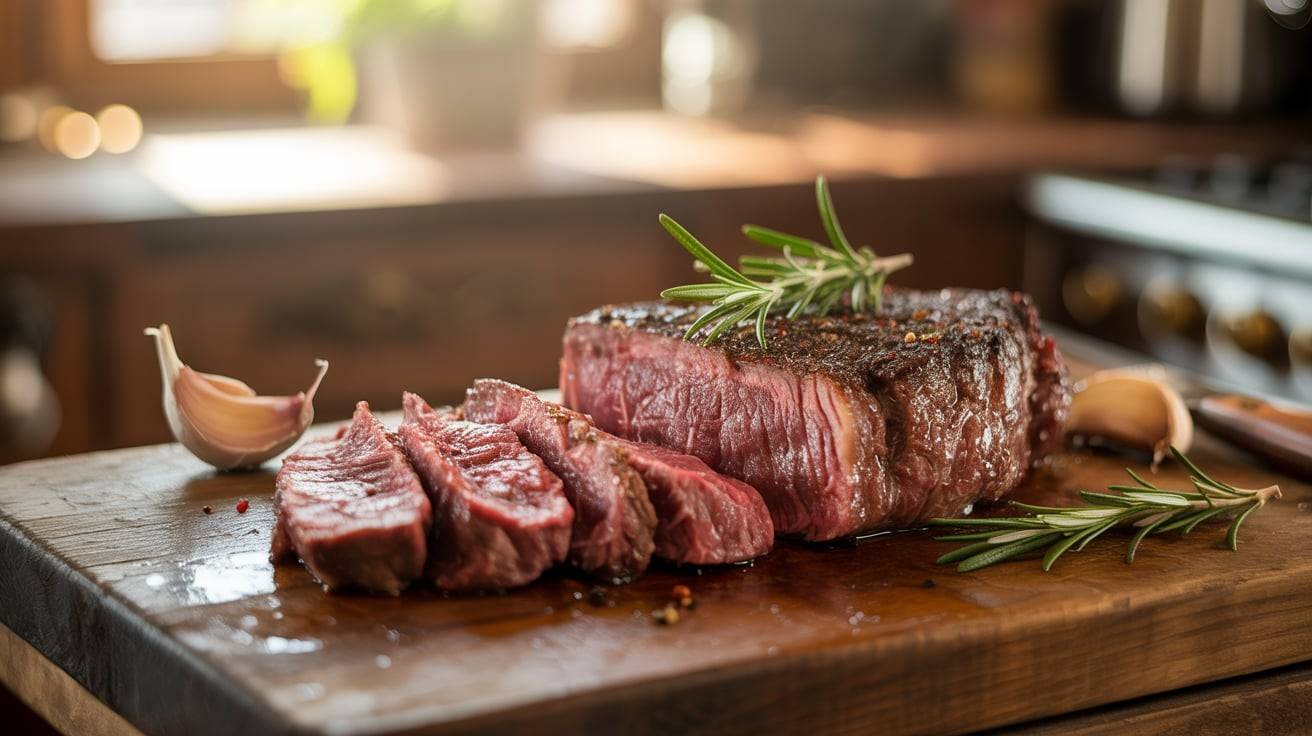Have you ever dreamed of turning your garden into a lush, tropical paradise — a peaceful escape right outside your door? The soft rustling of palm leaves, the elegant shapes, and the vibrant green hues can instantly transform any garden into a relaxing retreat. But if you live in New Zealand, you might wonder: Can palm trees really thrive here?
The truth is, with the right choice of palm species, you absolutely can! New Zealand’s climate might not be tropical, but there are many palm trees specially suited to withstand its cooler temperatures and even occasional frost. Whether you want tall palms for shade, compact varieties for pots, or something that adds a splash of color, there’s a palm for every garden style.
In this article, we’ll explore 30 palm trees perfect for New Zealand gardens that combine beauty, resilience, and ease of care. You’ll learn about species that are hardy enough to survive winter chills, palms that grow quickly, and those that create a true tropical feel without needing constant fuss.
If you’ve been searching for the best palm trees for New Zealand’s climate, or want to know how to choose palms that stay healthy year-round, this guide is your go-to resource. By the end, you’ll be ready to pick the perfect palms that fit your space and lifestyle, and turn your garden into a green paradise that’s uniquely yours.
Get ready to discover how easy and rewarding it is to grow palm trees in New Zealand — and start planning your very own tropical garden today!
Table of Contents
ToggleTypes of Palm Trees for New Zealand Gardens
New Zealand’s climate is friendly to many kinds of palm trees, whether you live in the warm north or cooler south. From cold-hardy palms like the Nikau to tropical-looking varieties like the Queen Palm, there’s something for every space. These garden-friendly palms can add height, shade, and a lush, island-style feel to your backyard. This guide explores 30 stunning palm tree types that grow well in Kiwi gardens and offer both beauty and low-maintenance charm.
Cluster Palm (Chamaedorea costaricana)
The Cluster Palm (Chamaedorea costaricana) is a fantastic choice for New Zealand gardeners looking to introduce a tropical palm tree that thrives in both indoor and outdoor spaces. Known for its ability to grow multiple slender stems close together, this compact palm creates a lush, tropical feel without taking up much room. Ideal for small gardens, patios, and urban homes, the Cluster Palm thrives in indirect sunlight and well-drained soil. Its resilience to low light and moderate watering needs make it an easy-care palm perfect for New Zealand’s varied climates. If you’re searching for a low-maintenance tropical palm that adds greenery and style, the Cluster Palm offers year-round interest with graceful, feather-like fronds that enhance any garden or indoor space.

Wedding Palm (Lytocaryum weddelwam)
For gardeners in New Zealand who want a palm tree with delicate elegance and decorative appeal, the Wedding Palm (Lytocaryum weddelwam) stands out. This slender, ornamental palm features fine, arching fronds that give it a soft and romantic look—ideal for tropical landscaping or as a feature plant on patios and verandas. It prefers partial sunlight and well-drained soil, making it well-suited to New Zealand’s North Island climate. The Wedding Palm’s slow, steady growth and compact size make it a perfect fit for container gardening and small urban gardens. With its graceful appearance and easy-care nature, this palm brings a charming tropical touch while thriving in typical New Zealand garden conditions.
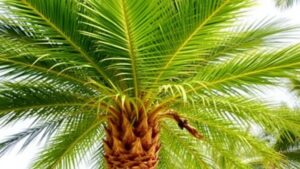
Nikau Palm (Rhopalostylis sapida)
The Nikau Palm (Rhopalostylis sapida) is the only palm native to New Zealand, and it’s a true symbol of native New Zealand flora. Famous for its cold-hardiness and wind tolerance, the Nikau Palm grows well across both the North and South Islands, including frost-prone areas. Its tall, slender trunk with deep green, feathery fronds creates an iconic tropical silhouette that suits large gardens and natural landscapes alike. Preferring moist, fertile, and well-drained soil, this palm thrives best in areas with consistent rainfall but adapts well to garden settings. The Nikau Palm adds authentic native greenery and a peaceful, tropical feel to any New Zealand garden, blending beauty with durability in colder climates.
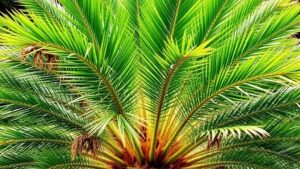
Chatham Island Nikau
The Chatham Island Nikau is a robust and hardy palm native to the colder, windier Chatham Islands, making it one of the most cold-tolerant palm trees for New Zealand’s South Island gardens. This palm features tougher, thicker leaves and a sturdy trunk adapted to withstand frost and coastal winds. It prefers well-drained, moist soils and tolerates partial to full sun exposure. Gardeners looking for a native palm species that can handle New Zealand’s unpredictable weather will find the Chatham Island Nikau a reliable and striking choice. It adds a true native tropical vibe to frost-prone outdoor spaces, making your garden stand out with natural resilience and unique character.
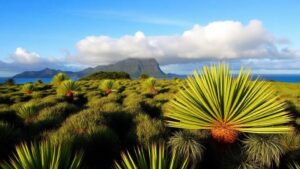
Chinese Windmill Palm (Trachycarpus fortunei)
The Chinese Windmill Palm (Trachycarpus fortunei) is widely regarded as one of the best cold-hardy palm trees suitable for New Zealand’s cooler South Island and frost-prone areas. Its distinctive fan-shaped leaves and textured trunk bring a unique tropical appearance, even in colder climates. This palm thrives in full sun to partial shade and well-drained soil, tolerating frosts that would damage many other palm species. Growing up to 15 meters tall, the Chinese Windmill Palm is perfect for gardeners seeking a tropical palm that combines beauty with durability. Whether used as a street tree or garden feature, it’s a top choice for adding tropical greenery where winters are harsh.
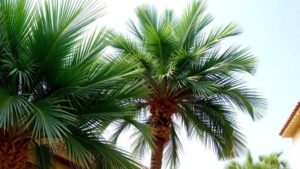
Chusan Palm (Trachycarpus wagnerianus)
The Chusan Palm (Trachycarpus wagnerianus) is an ideal cold-tolerant palm tree for New Zealand gardeners who want a compact yet striking tropical plant. Its stiff, fan-shaped leaves with spiny edges give it a distinctive, textured look. It grows slower and stays shorter than many other palms, making it perfect for smaller gardens, patios, or urban homes that need a space-saving palm tree. The Chusan Palm thrives in well-drained soil and tolerates frost, wind, and varying light conditions, making it a reliable choice for both North and South Island climates. If you want an easy-care, frost-hardy palm with tropical flair, this palm delivers excellent value and aesthetic appeal.
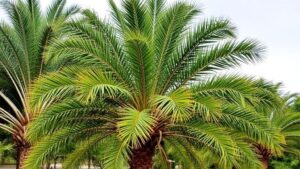
Sago Palm (Cycas revoluta)
Though technically a cycad and not a true palm, the Sago Palm (Cycas revoluta) is a popular ornamental palm alternative for New Zealand gardens. Its stiff, feather-like fronds create a striking tropical appearance perfect for compact garden spaces and container planting. It prefers partial sunlight and thrives in well-drained, dry soil, making it drought-tolerant and easy to maintain. The slow-growing Sago Palm brings exotic style without the large size of many tropical palms, fitting nicely into urban gardens or indoor setups. Caution is needed since all parts of the plant are toxic if ingested, so it’s best placed away from pets and children. For gardeners wanting a low-maintenance tropical accent plant, the Sago Palm is an excellent choice.

Queen Palm (Syagrus romanzoffiana)
The Queen Palm (Syagrus romanzoffiana) is a fast-growing, majestic palm native to South America but widely planted in New Zealand’s warmer North Island regions. Its tall, slender trunk and long, feathery fronds create an iconic tropical look that instantly transforms any large garden or park into a lush paradise. The Queen Palm thrives in full sun and well-drained soil and requires moderate watering to maintain its vibrant green foliage. It can grow up to 20 meters tall, making it suitable for gardeners wanting a dramatic tropical palm that provides shade and beauty. This palm is excellent for creating an inviting tropical atmosphere in New Zealand’s outdoor spaces.
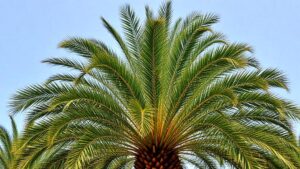
European Fan Palm (Chamaerops humilis)
The European Fan Palm (Chamaerops humilis) is a cold-hardy, drought-tolerant palm well-suited to New Zealand’s cooler and dryer garden spots, including South Island areas. It forms dense clumps of fan-shaped leaves that add texture and structure to smaller gardens or urban landscapes. Growing slowly to about 5 meters tall, it thrives in full sun to partial shade and requires minimal watering, making it perfect for gardeners seeking a low-maintenance palm that can withstand frost and dry spells. Its rugged beauty and tolerance for tough conditions make it a versatile addition to any New Zealand garden, adding year-round tropical interest.

Kentia Palm (Howea forsteriana)
The Kentia Palm (Howea forsteriana) is one of the most popular indoor and outdoor palms in New Zealand due to its graceful, arching fronds and exceptional adaptability. This palm grows slowly but steadily and thrives in low to moderate light conditions, making it perfect for shaded patios, indoor rooms, and sheltered garden spots. It prefers well-drained soil with moderate watering and can tolerate cooler temperatures better than many tropical palms. Known for its easy-care nature, the Kentia Palm brings a sophisticated, tropical feel to any setting. Its elegant appearance and resilience make it a favorite for those wanting a low-maintenance tropical palm with classic beauty.
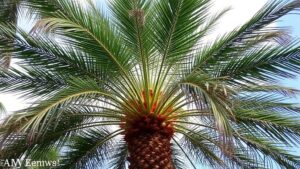
Bangalow Palm (Archontophoenix cunninghamiana)
The Bangalow Palm is a fast-growing, elegant palm native to the east coast of Australia, thriving especially well in New Zealand’s North Island gardens. It boasts a slender, smooth trunk and lush green feathery fronds that bring a true tropical feel to any outdoor space. This palm prefers well-drained, moist soils and thrives under partial shade to full sun conditions. It is well suited for sheltered locations because it has low tolerance for strong sea winds and harsh coastal weather. Often used as a specimen tree or in courtyard plantings, the Bangalow Palm creates a striking focal point. However, due to regional restrictions, it is currently not available for sale in Auckland. For gardeners seeking a tropical palm with quick growth and lush foliage, the Bangalow Palm is a top choice for subtropical landscapes in New Zealand.
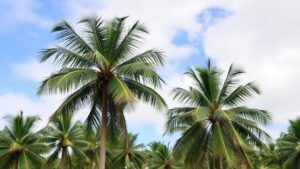
Dwarf Date Palm (Phoenix roebelenii)
The Dwarf Date Palm, commonly known as the Pygmy Date Palm, is an excellent choice for gardeners with small gardens or those who prefer container planting. Native to Southeast Asia, this slow-growing palm features delicate, arching feather-like fronds and a thin trunk that adds a graceful touch to any garden or indoor setting. It thrives best in partial shade with well-drained soils, making it highly adaptable to New Zealand’s coastal climates. The Dwarf Date Palm is hardy and resistant to wind, making it suitable for both outdoor and indoor ornamental use. Regular watering and occasional fertilizing are important to maintain its vibrant green foliage and healthy growth. This palm is perfect for creating a tropical understory, adding a subtle tropical accent to patios, decks, or indoor spaces.
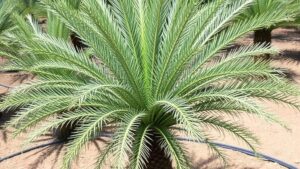
King Palm (Archontophoenix cunninghamiana)
The King Palm is celebrated for its fast growth, elegant form, and graceful appearance. It features a smooth, grey trunk topped with a lush crown of feathery, arching fronds that sway gently in the breeze. This palm thrives in moist, well-drained soils and can tolerate a range of light conditions from full sun to partial shade. It’s a fantastic option for gardeners looking to create a tropical canopy or a bold landscape focal point in subtropical regions of New Zealand. The King Palm is moderately frost-tolerant, but it performs best in areas free from severe cold. Its fast growth rate and attractive silhouette make it a popular choice for landscape designers aiming to add a lush, exotic touch to gardens and parks.

Mexican Fan Palm (Washingtonia robusta)
The Mexican Fan Palm is an iconic palm species known for its towering height and rapid growth. Native to Mexico, it can grow up to 30 meters tall, making it perfect for large-scale landscapes, avenue plantings, and park settings. This palm thrives in full sun and well-drained soils, demonstrating excellent tolerance for drought and coastal conditions. Its distinctive fan-shaped leaves create a dramatic, tropical silhouette that instantly transforms any landscape. Regular pruning of dead fronds is essential to maintain its tidy appearance and to avoid hazards caused by falling foliage. The Mexican Fan Palm is widely used in subtropical and tropical gardens for its imposing presence and low maintenance needs, making it a favorite for adding vertical interest in New Zealand’s warmer regions.
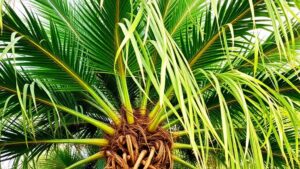
Chinese Fan Palm (Livistona chinensis)
The Chinese Fan Palm is a versatile, slow-growing palm featuring large, fan-shaped leaves that create a stunning tropical statement. Native to East Asia, it adapts well to subtropical climates and is suitable for both indoor and outdoor gardens. This palm prefers well-drained soils and thrives under partial shade, making it perfect for shaded patios, container planting, or as a specimen tree in landscaped gardens. Its manageable size and slow growth rate make it ideal for gardeners seeking a low-maintenance ornamental palm. The broad, fan-like foliage adds texture and structure, enhancing tropical-themed garden designs. The Chinese Fan Palm is a popular choice for creating an exotic, peaceful atmosphere without overwhelming smaller garden spaces.

Lady Palm (Rhapis excelsa)
The Lady Palm is a hardy, low-maintenance palm native to Asia, prized for its multi-stemmed growth habit and distinctive fan-shaped leaves. It thrives in low-light environments, making it perfect for indoor use or in shaded garden areas. The palm prefers moist, well-drained soils and is tolerant of a range of temperatures, including cooler climates found in parts of New Zealand. Its compact size and elegant foliage make it an excellent option for privacy screens, container planting, or as a decorative indoor plant. The Lady Palm is also valued for its air-purifying properties, adding both beauty and functionality to indoor spaces. This palm is ideal for gardeners seeking a stylish, adaptable palm that requires minimal care.

Burrawang Palm (Macrozamia communis)
Though not a true palm, the Burrawang Palm is a fascinating Australian cycad that adds a prehistoric touch to gardens. Its stiff, arching fronds and thick, woody trunk give it a striking palm-like look. It thrives in well-drained soils and tolerates both full sun and partial shade. Known for its drought tolerance, this plant is perfect for xeriscaping, low-water gardens, and native plant landscapes. Its unique texture and form add significant visual interest and depth to any garden. The Burrawang Palm requires minimal maintenance and adapts well to New Zealand’s subtropical and temperate climates, making it an excellent choice for sustainable, low-input gardening.

Moores Cycad (Macrozamia moorei)
The Moores Cycad is a spectacular, slow-growing plant native to Queensland, Australia. Featuring a stout, rugged trunk and stiff, arching fronds, it offers a dramatic, palm-like architectural form. It thrives in well-drained soils and is tolerant of drought and light frost, making it suitable for various New Zealand climates. This cycad is ideal for feature planting in gardens or rockeries, where its unique texture and form can be showcased. Due to its slow growth, the Moores Cycad is a long-term garden investment, offering lasting beauty with minimal maintenance. Its resilience and distinctive silhouette make it a prized choice among gardeners seeking unusual and exotic plants.
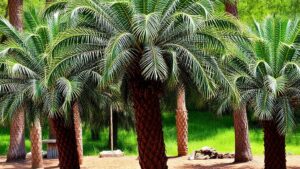
Bread Palm (Encephalartos spp.)
The Bread Palm refers to several species of cycads native to Africa, valued for their robust trunks and stiff, arching fronds. These cycads are drought-tolerant and flourish in well-drained soils with exposure to full sun or partial shade. They are excellent choices for xeriscaping, rock gardens, or as specimen plants in tropical or subtropical garden designs. Despite being slow-growing, Bread Palms offer unique texture and structure, enhancing any landscape with their prehistoric charm. Their ability to withstand dry conditions makes them ideal for gardens requiring low-water, low-maintenance plants. Incorporating Bread Palms adds an exotic, resilient character to New Zealand’s subtropical gardens.

Umbrella Palm (Hedyscepe canterburyana)
Native to Lord Howe Island, the Umbrella Palm is a rare and elegant palm featuring a slender trunk topped with a crown of gracefully arching fronds resembling an umbrella. This palm prefers rich, organic soils with partial shade and is best planted in sheltered garden spots or containers. The Umbrella Palm is slow-growing and requires protection from strong winds and direct sunlight, especially during its early years. Its unique form and rarity make it a prized specimen among palm collectors and garden enthusiasts aiming to create a distinctive tropical atmosphere. Due to its limited availability, it is considered a special addition for creating exclusive subtropical garden spaces in New Zealand.
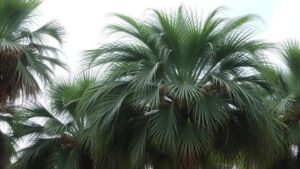
Dwarf Palmetto (Sabal minor)
The Dwarf Palmetto is a hardy, low-growing palm native to the southeastern United States. It has fan-shaped leaves and thrives in moist, well-drained soils, tolerating partial shade and even cold temperatures. This palm is ideal for understory plantings, wetland gardens, or locations prone to seasonal flooding. Its exceptional resilience and adaptability make it a valuable addition for gardeners seeking a low-maintenance, cold-hardy palm that provides lush, tropical foliage throughout the year. The Dwarf Palmetto adds texture and greenery to temperate gardens and performs well in New Zealand’s wetter climates, especially in shaded or damp areas.

Sugarcane Palm (Dypsis baronii)
The Sugarcane Palm (Dypsis baronii) is a stunning tropical palm native to Madagascar known for its tall, slender, and cane-like trunks that resemble sugarcane stalks. This palm thrives in well-drained soils and prefers full sun to partial shade, making it suitable for New Zealand gardens with subtropical climates. It is prized for its graceful, arching fronds that create a lush, tropical ambiance. The Sugarcane Palm is moderately fast-growing and is often used as a specimen plant or in landscape groupings for tropical garden designs. Its tolerance to wind and occasional drought makes it a durable choice. Gardeners value this palm for its unique texture and vertical interest, which enhances patios, poolsides, and garden borders. Incorporating the Sugarcane Palm into your garden adds exotic flair with minimal maintenance.
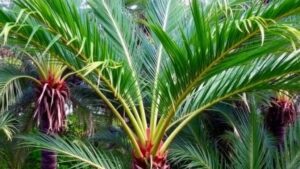
Ponytail Palm (Beaucarnea recurvata)
The Ponytail Palm (Beaucarnea recurvata) is a popular ornamental plant known for its distinctive bulbous trunk and long, curly, strap-like leaves that cascade like a ponytail. Despite its name, it is actually a succulent rather than a true palm, which makes it extremely drought-tolerant and perfect for low-maintenance gardens. It thrives in well-drained soil with bright, indirect sunlight or full sun. The Ponytail Palm is an excellent choice for container planting, patios, and indoor decor due to its compact size and unique shape. It grows slowly, making it ideal for small spaces or apartment living. This plant adds a quirky, tropical vibe to gardens and interiors alike and is highly regarded among enthusiasts of exotic plants. Its easy care and striking form make it a favorite in subtropical New Zealand gardens.
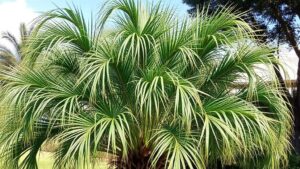
Baby Queen Palm (Chamedorea plumosa)
The Baby Queen Palm (Chamedorea plumosa) is a charming, slow-growing palm well-suited for small gardens and indoor spaces. Native to Central America, this palm features fine, feathery fronds and a slender trunk, creating a delicate, elegant look. It thrives best in shaded or semi-shaded environments with moist, well-drained soil. The Baby Queen Palm is a perfect choice for adding a soft tropical touch to patios, balconies, and shaded garden corners. Its manageable size makes it ideal for gardeners wanting a low-maintenance, decorative palm without overwhelming space. Often used as an indoor ornamental plant, it helps create a tropical ambiance inside homes and offices. This palm’s graceful foliage and adaptability make it popular among gardeners seeking subtle but effective tropical greenery.

Caugui Palm (Chamaedorea oblongata)
The Caugui Palm (Chamaedorea oblongata) is a slender, elegant palm native to Central and South America, admired for its thin stems and delicate, arching fronds. It thrives in partial shade and prefers moist, well-drained soil, making it well-suited for New Zealand gardens with subtropical or shaded conditions. This palm is slow-growing and often used as a houseplant or shade garden feature due to its compact size. Its refined foliage adds a soft, tropical texture to shaded areas, patios, and indoor spaces. The Caugui Palm is a favorite for creating lush understory plantings and complements garden designs that emphasize texture and form. Its adaptability to indoor and outdoor environments makes it a versatile choice for tropical garden enthusiasts.
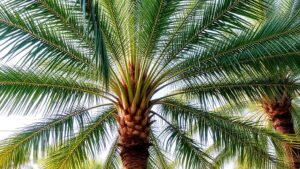
Cascade Palm (Chamaedorea cataractarum)
The Cascade Palm (Chamaedorea cataractarum) is a graceful, multi-stemmed palm native to Central America, prized for its slender, cascading fronds that create a waterfall-like effect. It thrives in shaded to semi-shaded locations and prefers well-drained, moist soils. This palm is slow-growing and compact, making it perfect for indoor planting, shaded patios, and tropical garden understories. The Cascade Palm adds lush greenery with minimal space requirements, ideal for urban gardeners or those with limited outdoor areas. Its elegant form and fine-textured foliage create a soft, tropical ambiance, enhancing both indoor and outdoor spaces. Gardeners often use it as an accent or companion plant in mixed tropical garden beds or containers. Its low maintenance and adaptable nature make it a popular palm for subtropical gardens.
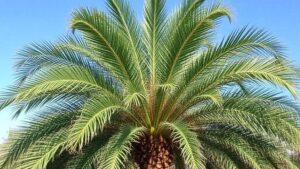
Mini Majestic Palm (Ravenea glauca)
The Mini Majestic Palm (Ravenea glauca) is a charming dwarf palm from Madagascar, known for its compact size and attractive, feathery fronds. It thrives in partial shade to full sun and prefers well-drained, moist soil. This palm is ideal for small gardens, balconies, and container growing, making it a favorite among gardeners with limited space. The Mini Majestic Palm adds tropical elegance with its delicate leaflets and graceful arching habit. Its manageable size and slow to moderate growth rate make it easy to maintain and perfect for subtropical New Zealand gardens. Gardeners appreciate its adaptability to indoor and outdoor environments, and it adds a lush, tropical feel to patios, decks, and sheltered garden spots.
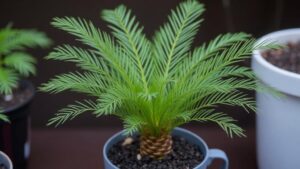
Walking Stick Palm (Linospadix monostachyos)
The Walking Stick Palm (Linospadix monostachyos) is a slender, understory palm native to Australia’s rainforests. It features a thin, cane-like trunk and delicate feathery fronds, ideal for creating a natural, tropical understory in gardens. Preferring shady, sheltered locations with moist, well-drained soils, this palm is perfect for planting under larger trees or in shaded garden areas. Its slow growth and compact habit make it suitable for small garden spaces and shade gardens. The Walking Stick Palm adds vertical interest without overwhelming the landscape and is often used in subtropical New Zealand gardens to create a layered, naturalistic effect. Its unique, slender trunk resembles a walking stick, which gives this palm its common name and adds character to tropical garden designs.
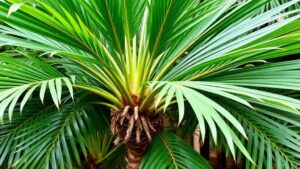
Atherton Palm (Laccospadix australasica)
The Atherton Palm (Laccospadix australasica) is a rare, elegant palm native to the Atherton Tablelands of Queensland, Australia. It features a slender trunk topped with a dense crown of finely divided, feathery fronds. This palm prefers humid, shaded environments with rich, well-drained soils, making it suited to subtropical garden settings that mimic its natural rainforest habitat. The Atherton Palm is slow-growing and highly valued for its delicate, graceful appearance. It’s ideal for shaded gardens, patios, or container planting where its unique texture can be appreciated up close. Gardeners seeking an exotic, low-maintenance palm with fine foliage and compact size find the Atherton Palm an excellent addition to subtropical New Zealand gardens.

Jelly Palm (Butia capitata)
The Jelly Palm (Butia capitata), also known as the Pindo Palm, is a hardy, cold-tolerant palm native to South America. It features a stout trunk and blue-green, arching fronds that add texture and color contrast in garden landscapes. This palm thrives in full sun and well-drained soils, tolerating drought and occasional frost, making it suitable for a wide range of New Zealand climates. The Jelly Palm produces edible fruits often used to make jellies and preserves, adding an edible aspect to its ornamental appeal. It grows moderately fast and is popular in subtropical and temperate gardens for its rugged beauty and adaptability. Gardeners appreciate the Jelly Palm for its resilience, vibrant foliage, and dual-purpose nature as both an ornamental and fruit-bearing plant.
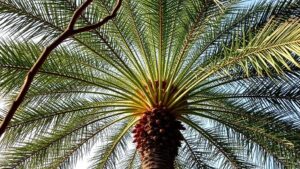
Growing Palm Trees in Taranaki
Taranaki offers a great environment for growing palm trees, thanks to its mild climate and fertile volcanic soils. Unlike some cooler regions of New Zealand, Taranaki benefits from relatively warm temperatures and moderate rainfall, which create perfect conditions for many types of palms to flourish. However, growing palms here requires understanding the local weather patterns, soil, and wind exposure.
When planting palms in Taranaki, choose species that can tolerate occasional cool snaps and coastal winds. For example, cold-hardy palms like the Chinese Windmill Palm (Trachycarpus fortunei) or European Fan Palm (Chamaerops humilis) are excellent choices because they can survive frost and strong winds better than tropical palms. The volcanic soil here drains well but retains enough moisture, so palms don’t suffer from waterlogging, which is essential for healthy root growth.
Providing some protection from harsh coastal winds helps young palms establish stronger roots and fuller foliage. Mulching around the base retains moisture and provides nutrients, while regular watering during dry spells supports steady growth. Fertilizing with palm-specific nutrients rich in potassium and magnesium also encourages vibrant green fronds and overall health. With proper care and choosing the right palm species, gardeners in Taranaki can successfully grow striking palms that add a lush, tropical vibe to their outdoor spaces, enhancing the beauty and feel of their gardens year-round.
Palm Trees Thrive in New Zealand
Palm trees thrive in New Zealand because the country’s diverse climates suit a variety of palm species. The warmer, subtropical North Island supports tropical palms that add lush greenery and tropical appeal, while the cooler South Island is perfect for cold-hardy palms that can withstand frost and wind. This adaptability means palms are a popular garden choice across New Zealand.
Thanks to New Zealand’s fertile soils, ample rainfall, and temperate climate, many palms grow healthy and strong. They bring a tropical feel to gardens, parks, and streetscapes, transforming ordinary spaces into inviting and exotic landscapes. Whether you want a tall, graceful palm for a statement tree or a compact palm for container planting, New Zealand’s conditions allow for a wide range of beautiful palm varieties to thrive.


